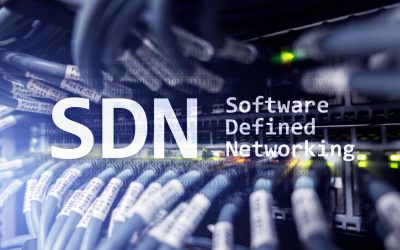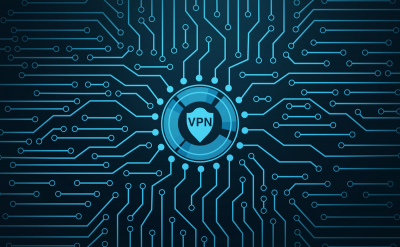This landscape of networking shows –
More users….more apps….more devices….
An influx of devices and data are crossing their boundaries of traditional WAN architectures, creating an issue for business security and networking. IT departments are attempting to expand bandwidth, enhance connectivity, and securely make available multi-cloud applications.
Enter SASE and SD-WAN networking world.
Significant advantages from Secure Access Service Edge (SASE) and Software-Defined Wide Area Networking (SD-WAN) together provide a vision for managing the next normal. SASE combines security and networking functions, allowing the organizations to connect users to services.
SASE and SD-WAN – face-off
Secure Access Service Edge (SASE) and Software-Defined Wide Area Networking (SD-WAN) are two networking technologies specially developed to link geographically disparate endpoints to a central source of data and application resources.
SD-WAN utilizes a virtualized network to connect and manage branch offices. At the same time, SASE concentrates on connecting individual endpoints (individual user, branch office, or single device) to a centralized cloud.
As per Gartner: “The secure access service edge is an emerging offering combining comprehensive WAN capabilities with comprehensive network security functions (such as SWG, CASB, FWaaS, and ZTNA) to support the dynamic, secure access needs of digital enterprises.”
What is SASE architecture?
SASE is said to offer a heavy cloud solution, which means that most of the functions could be provided in the cloud. SASE is the convergence of network security services (Firewall as a Service (FWaaS), CASB, and Zero Trust) and wide area networking (WAN) into a single, cloud-delivered service model.
Gartner says: “SASE capabilities are delivered as a service-based upon the identity of the entity, real-time context, enterprise security/compliance policies and continuous assessment of risk/trust throughout the sessions. Identities or entities can be associated with people, groups of people (branch office), devices, applications, services, IoT systems or edge computing locations.”
SASE architecture model could help your business in several ways:
- Data protection
- Cost savings
- Threat prevention
- Simplicity to manage into a cloud-based network
- Zero trust
- Flexibility
- High performance
Difference between SASE and SD-WAN
Following are the three significant differences:
1. Location of security and networking decisions
SASE architecture concentrates on offering secure access to centralized resources for the network and its consumers. In contrast, SD-WAN technology uses third-party security.
2. SD-WAN and SASE relationship to the cloud
As we all know, the cloud is a central nervous system between headquarters, remote workers, and branch offices. Although, cloud integration is more a feature of SD-WAN rather than a major component. With cloud-supported SD-WANs, consumers could connect to a virtual cloud gateway via the internet, making the network more supportive of cloud-native applications.
Moreover, the SASE architecture combines WAN abilities with cloud-native security functions such as cloud access security brokers (CASB), secure web gateways, zero-trust network access (ZTNA), and firewalls. This means that healthcare data and its equipment in a network are linked to a centralized cloud-based service.
3. Traffic inspection
With SASE networks’ help, traffic is opened once and inspected by numerous policy engines, whereas SD-WAN uses service chaining. Service chaining inspects traffic by one security function at a time. These specific functions manage one type of peril and are termed as point solutions.
SASE is just a first move in the WAN transformation journey. SASE and SD-WAN were created to cover a large geographic area. The difference between them is the only infrastructure. SASE’s infrastructure has cloud as an endpoint, edge data centers, or points of presence (PoP). Here all of the security, networking, and optimization functions are run and controlled. In SD-WAN, these functions run in boxes at a headquarter and branch.
How are vendors offering SD-WAN and SASE?
SASE is still in a growing phase; therefore, many SD-WAN vendors offer SASE solutions along with their SD-WAN solutions. For instance, VMware VeloCloud, Cisco, and Open Systems are all practicing this.
What’s more on the plate?
One cannot have SASE without SD-WAN. The two technologies have an interdependent rapport that actually rolls out the security and networking stack into a single connectivity stack. SASE gets security to SD-WAN by showcasing four major characteristics:
- Support for all edges
- Identity driven
- Cloud-native architecture
- Worldwide distribution to enterprises
SD-WAN vs. SASE – final words
- SD-WAN and SASE are two different networking technologies that utilize various ways to reach similar ends.
- SD-WAN technology is more into linking offices to a central headquarters and data center. Also, it connects users directly to the cloud.
- SASE network is known to offer cloud-native security tools and has the cloud at the center of the network.
- These two technologies are specially designed to connect geographically distributed organizations in an adaptable and flexible manner.
Despite serving similar ends, SD-WAN and SASE do not share architectural similarities. However, some enhanced similarities include wide-area networks and their virtualized infrastructure.
Is your SASE and SD-WAN architecture ready?
If no, then get it done to enhance the security of your business.
For more such content download our latest whitepapers on SD-WAN and SASE or networking.









































































